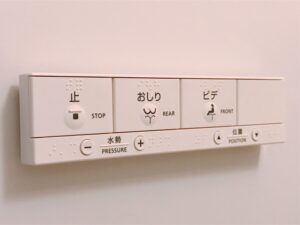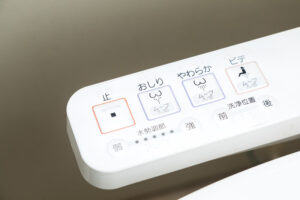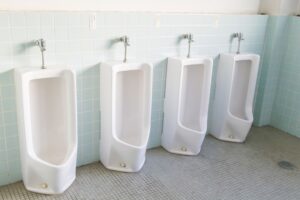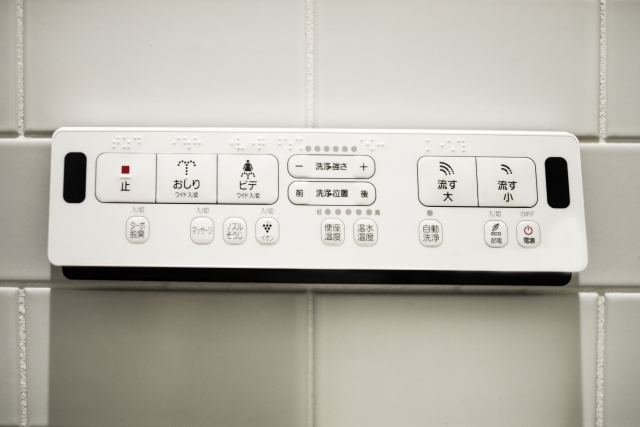Have you ever wondered why Japanese toilets are so high-tech? Japan is known worldwide for its advanced toilet technology, featuring numerous convenient and comfortable functions such as heated seats with warm water bidets and automatically opening and closing lids.
This article will provide an entertaining explanation of how Japanese toilets have evolved and how they impact our daily lives!
History of Japanese Toilet Technology
Introduction of Warm Water Bidet Seats
The catalyst for high-tech toilets in Japan was the introduction of warm water bidet seats. These seats can wash your bottom with warm water at the push of a button.
It’s incredibly hygienic and comfortable! On cold winter days, a warm seat welcomes you, making it an indispensable feature.
Development of Automatic Opening and Closing Systems
Doesn’t an automatically opening and closing toilet seat feel futuristic? This function opens the lid as you approach the toilet and closes it when you leave. Since it’s hands-free, it helps avoid contact with germs, making it even more hygienic.
Advancements in Hygiene and Their Impact
The most notable characteristic of Japanese toilet technology is undoubtedly its cleanliness. The automatic flushing function rinses the toilet clean after use, maintaining a consistently hygienic state.
Thanks to this technology, Japanese toilets are highly regarded worldwide.
TOTO’s Innovation
TOTO, Japan’s leading toilet manufacturer, is a pioneer in this field. Many of the high-tech toilets developed by TOTO are not only user-friendly but also praised for their design.
They have been installed in hotels and public facilities around the world

Latest Trends in Toilet Technology
Water-Saving Technology and Use of Eco-Friendly Materials
Japanese toilet technology also prioritizes environmentally friendly initiatives. The latest toilets incorporate water-saving technology that uses minimal water.
This significantly reduces water consumption while keeping toilets clean. Additionally, the use of recyclable materials helps reduce the environmental impact.
Integration of Digital Technology in Toilets
Recent toilets have integrated digital technology, even allowing connectivity with smartphones. For example, you can adjust seat temperature and washing intensity via an app, or manage usage data.
This enables more comfortable and efficient toilet use.
Future Toilet Technology
It’s exciting to imagine how toilet technology will evolve in the future. Researchers are working hard to develop more eco-friendly and comfortable features.
In the future, we might see toilets that can check health conditions or fully automated toilets.
Ecological Solutions Desired by Users
It would be great if we could make more environmentally friendly choices with the toilets we use daily.
In addition to water conservation and energy consumption reduction, it’s important to choose long-lasting products that are mindful of the materials used.

Latest Trends in Toilet Technology
Water-Saving Technology and Use of Eco-Friendly Materials
Modern Japanese toilets are contributing to environmental protection. Toilets using water-saving technology significantly reduce water consumption compared to conventional models. In fact, some of the latest models use less than 4 liters per flush, meeting international standards. Additionally, the use of highly biodegradable materials reduces environmental impact during disposal.
Efforts are also being made to reduce CO2 emissions during the toilet manufacturing process, contributing to overall environmental conservation.
Integration of Digital Technology in Toilets
The introduction of digital technology has dramatically improved the convenience and functionality of toilets. For example, smart toilets using IoT technology can collect users’ health data and notify them of any abnormalities through an app.
Furthermore, deodorizing functions and space purification technologies utilizing artificial intelligence (AI) are evolving toilets into even more comfortable spaces. These technologies also contribute to energy conservation, demonstrating the fusion of ecology and technology.
Future Toilet Technology
Future toilet technology is expected to evolve towards more eco-friendly functions and enhanced user health management. Researchers are developing sensors that analyze health conditions from excreta, which may enable daily health checks.
Moreover, fully automated cleaning systems and natural deodorizing systems that don’t use chemicals are also under development. These technologies suggest how toilets will integrate into our lives in the future.
Ecological Solutions Desired by Users
Ecological toilets are important not only for conserving water resources but also for improving energy efficiency.
Users are seeking environmentally friendly options throughout the entire lifecycle of toilets, from manufacturing to disposal, not just in terms of water usage. In response, many companies are promoting sustainable product development and beginning to offer products with green certifications in the market.

Global Perspective on Toilet Culture
Challenges and Acceptance Outside Japan
There are several challenges in the global acceptance of Japan’s high-tech toilets. For instance, in Western countries, hard water is common, which can cause malfunctions in precision toilet mechanisms due to calcium buildup.
Additionally, securing power sources and modifying bathroom designs are necessary.
However, Japanese toilet manufacturers are addressing these challenges by developing products tailored to regional needs and striving to adapt to local regulations and standards.
Japanese Hospitality Spirit and Toilet Technology
The Japanese spirit of “omotenashi” (hospitality) is reflected in toilet technology. For example, automatically opening and closing toilet seats and various user-friendly functions stem from this spirit.
Foreign tourists visiting Japan are often impressed by the high functionality of these toilets, enhancing their value as part of Japanese culture.
Conclusion
Japanese high-tech toilets not only provide comfort but also contribute to solving global issues such as environmental protection and water conservation. We look forward to seeing how evolving toilet technology will benefit our lives and health in the future.
Our role is to support this development while being mindful of potential risks associated with advancing technology.



